Sensors
Goal Sensors
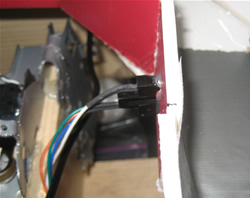
To make the game competitive and suitable for two players, we implemented two "goals" on the playing field—one behind the goalie, and one behind the flippers. When the ball enters each of these areas, it falls into a foamcore channel beneath the playing surface which directs the ball back to the ball depository in the front of the pinball machine. While traveling in the channel, the ball passes by an embedded IR reflective sensor—carefully placed at the exits of each goal. The surface finish of the white ping pong balls is sufficiently reflective to trigger the IR sensors. We amplify, and subsequently invert, the signal from the goal sensors by passing it through a Schmitt trigger to give us a clean logic level low of 0v when a ping pong ball is detected.

Penny Sensor
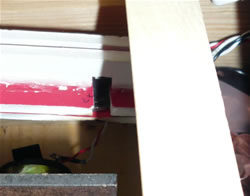
For our penny sensor, we laser cut a slot the approximate size of a penny out of 1/8" acrylic plate which we mounted to our frame. Attached to the slot is a narrow foamcore shaft which had an integrated IR emitter-detector pair (a.k.a "coin sensor"). An inserted penny slides down the shaft and breaks the IR beam before falling nicely into our penny repository (the bottom half of a Coke can).
We amplify, and subsequently invert, the signal from the "coin sensor" by passing it through a Schmitt trigger to give us a clean logic level high of 5v when a penny is inserted. We implemented timers in the software such that only one "Penny Event" is registered for each actual penny.
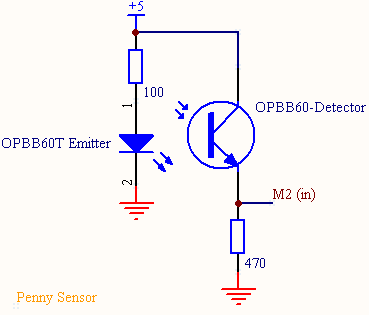
Difficulty Settings
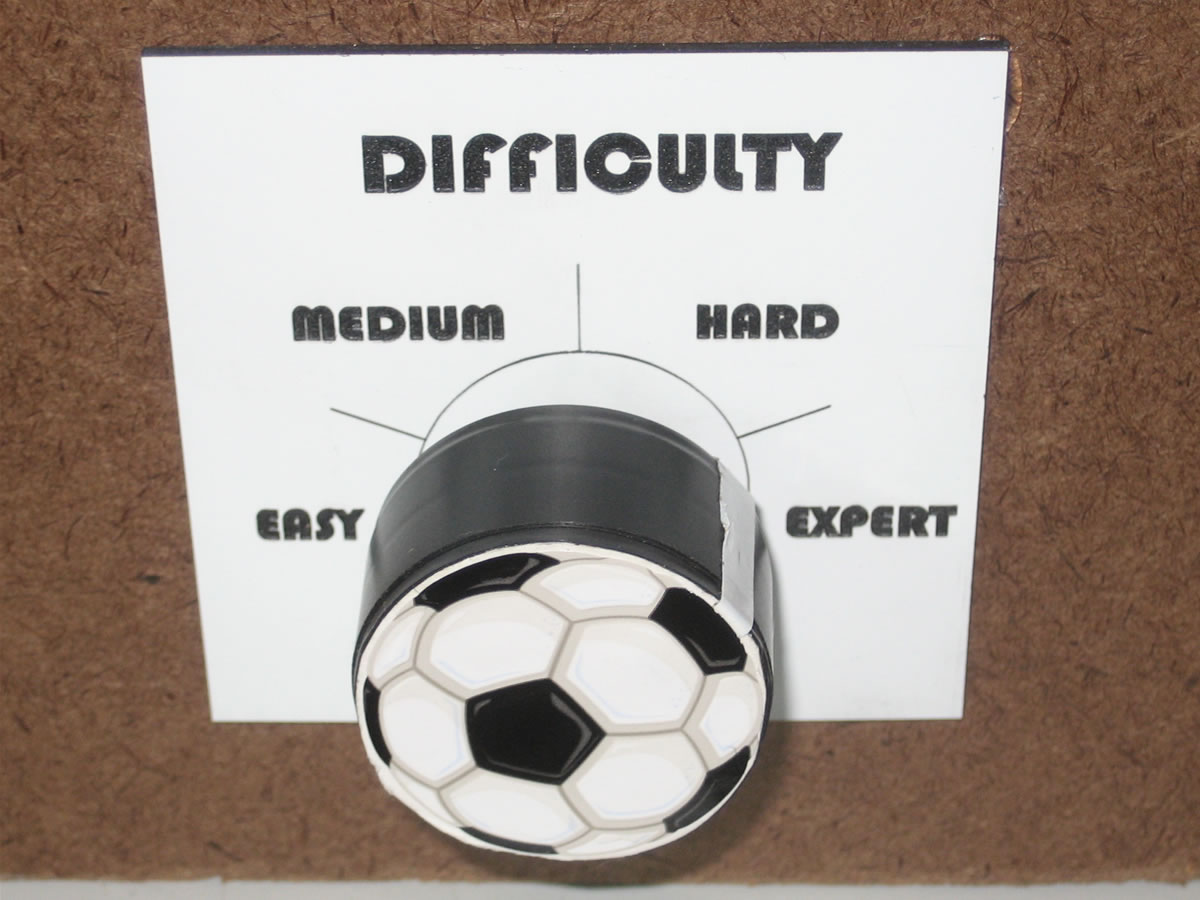
We added a difficulty level knob which varies the speed of the goalie motor. This was done using a potentiometer which ranges from 0V-5V. In software, we split up the analog input (ranging from 0-1064) evenly into four sections-- "Easy", "Medium", "Hard", and "Expert". It is highly recommended that those unfamiliar with the wrath of Goalie Ohline begin the game on the "Easy" setting.
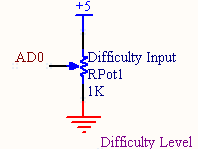
Goalie Direction
The direction of the goalie in the goalie drive circuit could be changed by any one of three events. Hitting either of 2 limit switches at the far ends of the goal caused the goalie to reverse direction. Additionally, an optional second player was able to control the goalie using a single switch located on the left hands side of the machine to change the goalie's direction of travel. All three switches were tied together with a hardware de-bounce on their ouput to control the goalie.

